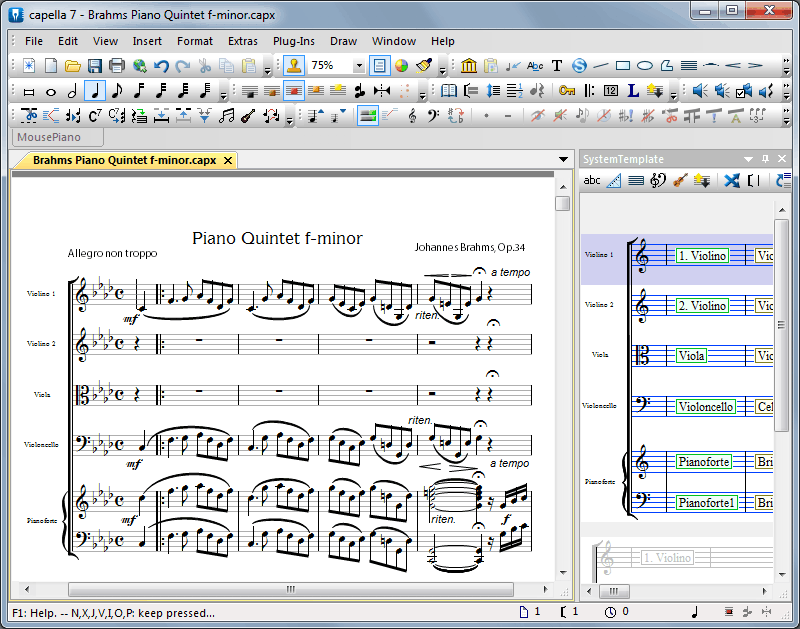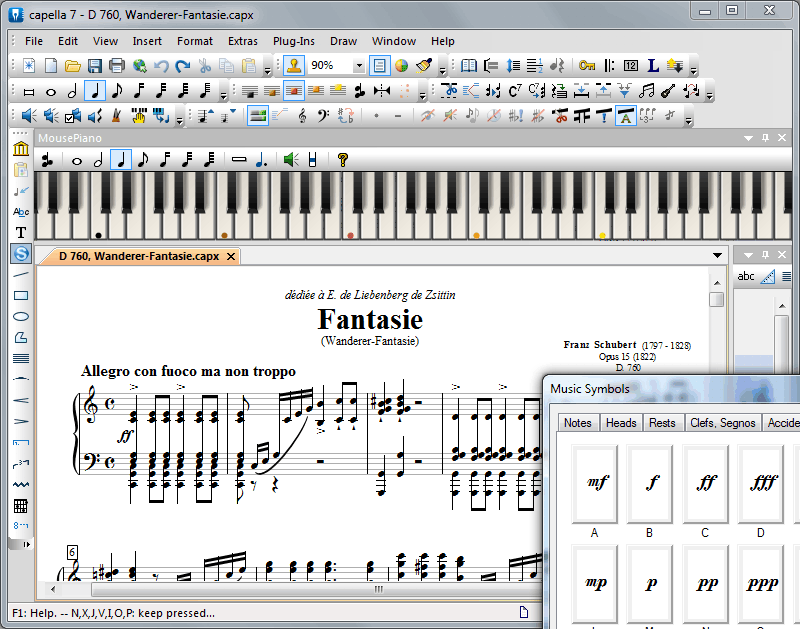Capella (notation program)
Capella is a music notation program that is developed from Söhrewald by the company capella Software AG and sold (note the spelling with a p; see a cappella, on the other hand, for example capella Coloniensis ). capella is only available for Microsoft Windows and is located in an English and a German version. The program is particularly common in German-speaking countries. Usually it is in the practical and semi-professional use (school musician, church musician, choir director and amateur musicians ). In network to find websites with extensive music collections in capella format.
Functions
Capella finds use in single and polyphonic music notation (eg, choral and orchestral scores ) and for recording songs with Akkordern, strophic texts or guitar chords. The input is usually completely from the computer keyboard, but can also be performed using the mouse or a MIDI keyboard. capella has an import and export function in the common MusicXML format, enabling the exchange of data with other music notation programs. A natively integrated PDF export does not yet, this also need an external PDF converter. Operation of software instruments (VSTi plug- ins) as a tone generator.
Family
- Capella (Full Version)
- Capella start, formerly capella 1200 ( entry-level version with reduced functionality )
- Capella reader ( reading and printing program for capella files)
History
The founder and author of capella Hartmut ring, a professor of mathematics and computer science at the University of Siegen. The first release took place in 1992 under the name Allegro. However, was for version 1.01 - dated 15 May 1992 - due to naming rights problems renaming in capella, after the main star Capella in the constellation Auriga. capella was initially developed for the operating system MS- DOS and cared for here until version 1.5, which appeared in 1993. In the DOS version, your own graphical user interface was already integrated. Version 2.0 was the first Microsoft Windows 3.1, but only the version 2.1 was stable.
With the 2004 version created the opportunity to edit scores via scripts. On this basis, there are more and free plugins that extend the functionality of capella. New in this version is the data export in a developed capella software open XML format, which is so far not supported by other music notation software.
In the 2.x versions (Windows 16- bit ) at least the basic version of the program was bound despite pressure to complete installation over a copy of the CD inserted. With Capella 800 (Version 3.0, 32 - bit) this copyright protection was removed. 2004, a hardware-based product activation was introduced.
In 2010, Bernd Jungmann took over the maintenance and further development of capella. At the same time ended Hartmut ring his active participation in the programming of capella.
The current version of the software is version 7.1-14.
Versions
File Formats
- *. all (file suffix in version 1, established by the original program name Allegro)
- *. cap, cap2 format ( file suffix for versions 2 to 4)
- *. cap, cap3 format ( While the file extension was maintained, changed the file format version 5, capella 2004 basic)
- *. capx (file suffix of the current version 7, adaptation to standard XML )
Others
The product line of the capella Software AG currently consists of eight programs in the lower price segment. These are capella, capella-scan, capella playalong, capriccio, tonica fugata, rondo audite, ! and capella wave kit. capella-scan is used to read printed music into capella means of Optical Music Recognition.
Except capella (approx. 300,000 registered licenses) and capella-scan ( approximately 120,000 registered licenses) has so far none of these programs found significant distribution.
Although capella is only available for Windows, but runs capella version 5, according to Wine Application Database on Linux using the Wine libraries " minor adjustments flawlessly " ( Gold status ).










